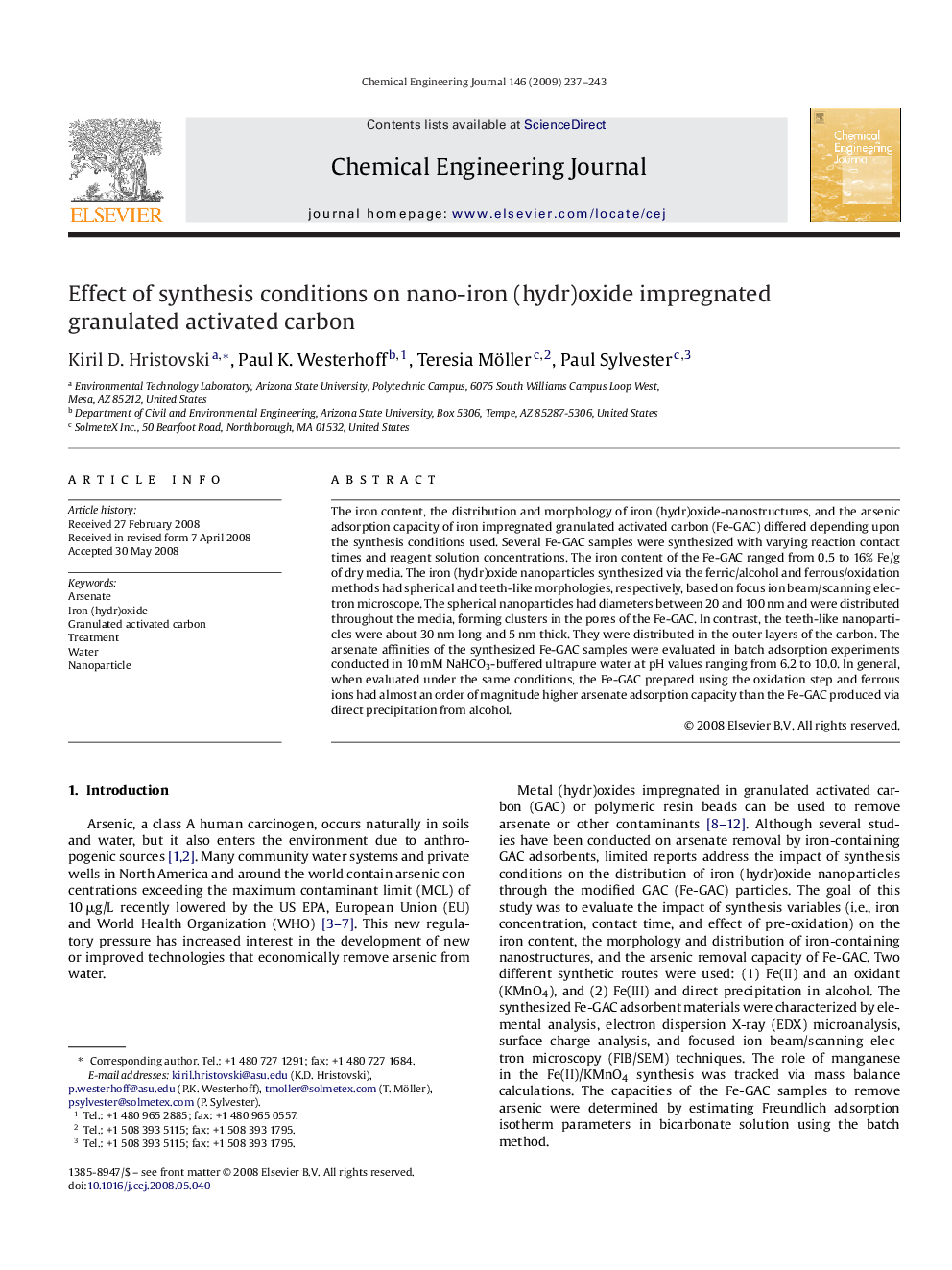| Article ID | Journal | Published Year | Pages | File Type |
|---|---|---|---|---|
| 152666 | Chemical Engineering Journal | 2009 | 7 Pages |
The iron content, the distribution and morphology of iron (hydr)oxide-nanostructures, and the arsenic adsorption capacity of iron impregnated granulated activated carbon (Fe-GAC) differed depending upon the synthesis conditions used. Several Fe-GAC samples were synthesized with varying reaction contact times and reagent solution concentrations. The iron content of the Fe-GAC ranged from 0.5 to 16% Fe/g of dry media. The iron (hydr)oxide nanoparticles synthesized via the ferric/alcohol and ferrous/oxidation methods had spherical and teeth-like morphologies, respectively, based on focus ion beam/scanning electron microscope. The spherical nanoparticles had diameters between 20 and 100 nm and were distributed throughout the media, forming clusters in the pores of the Fe-GAC. In contrast, the teeth-like nanoparticles were about 30 nm long and 5 nm thick. They were distributed in the outer layers of the carbon. The arsenate affinities of the synthesized Fe-GAC samples were evaluated in batch adsorption experiments conducted in 10 mM NaHCO3-buffered ultrapure water at pH values ranging from 6.2 to 10.0. In general, when evaluated under the same conditions, the Fe-GAC prepared using the oxidation step and ferrous ions had almost an order of magnitude higher arsenate adsorption capacity than the Fe-GAC produced via direct precipitation from alcohol.
